Standard Solar delivers 7.2 MW system at Port Newark Container Terminal | Projects Weekly

This edition of Projects Weekly highlights the new rooftop and canopy solar system at one of the busiest ports in the United States. Plus, SolarBank’s 7.2 MW Hoadley Hill project has completed a mandated interconnection study to move forward, Recurrent Energy has energized a 1,200 MWh storage facility in Arizona in time to meet peak summer demand, DSD Renewables has partnered with General Energy to complete a 675 kW solar project for the Elmhurst Park District in Illinois, and a new community solar project has powered up in the Baltimore-Washington region. Read on for all the details.
Standard Solar installed a 7.2 MW solar system to provide 50% of the energy needs for the Port Newark Container Terminal (PNCT) in New Jersey. The project delivers renewable energy through rooftop and canopy systems that were built without disrupting port activity.
“Designing and installing a system of this scale within a fully operational, high-traffic container facility required custom engineering and constant coordination,” said C.J. Colavito, General Manager of Integrated Project Teams, Standard Solar. “From elevated canopy structures to rooftop arrays, every component was designed to work around ongoing port activity without compromising safety or performance.”
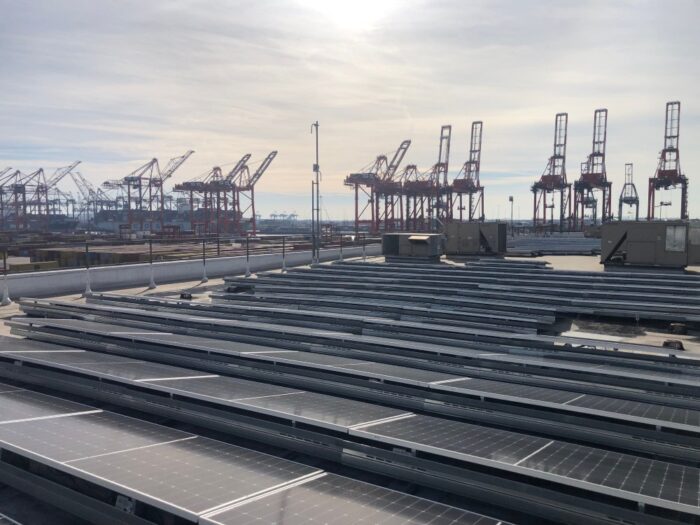
Cool factor: Completed in partnership with the Port Authority of New York and New Jersey and the city of Newark, the system was strategically built over active truck lanes, rooftops and parking areas, maximizing available space while maintaining full operational continuity throughout construction.
Built across the 320-acre terminal, the installation also has the capacity to send excess power to the Newark grid, supporting local energy resilience and emissions reduction. The project features:
- 3.8 MW of elevated canopy-mounted arrays over active truck lanes.
- 3.4 MW of additional rooftop and parking canopy arrays.
- Real-time dashboard for monitoring energy production and carbon savings.
“This project showcases the ingenuity and adaptability of solar to thrive in even the most complex, space-constrained logistics environments,” said Rick Berube, Chief Operations Officer, Standard Solar. “We’re proud to help PNCT lead the way toward a cleaner, more resilient port, benefiting not just terminal operations but the Newark community and region as a whole.”
SolarBank’s 7.2 MW Hoadley Hill project completes interconnection study
SolarBank Corp. has cleared a key milestone in the development of the 7.2 MW Hoadley Hill Road ground-mount solar project in upstate New York. The project has completed the Coordinated Electric System Interconnection Review (CESIR). This critical regulatory green light paves the way for the next major steps — securing full site permits, financing and preparing for construction.
“With the interconnection review now in the rearview mirror, we’re shifting into high gear,” said SolarBank CEO Dr. Richard Lu. “We’re now full speed ahead on permitting and project financing to bring this clean energy solution online.”
Once permits and financing are secured, SolarBank intends to begin construction on what will be structured as a community solar project.
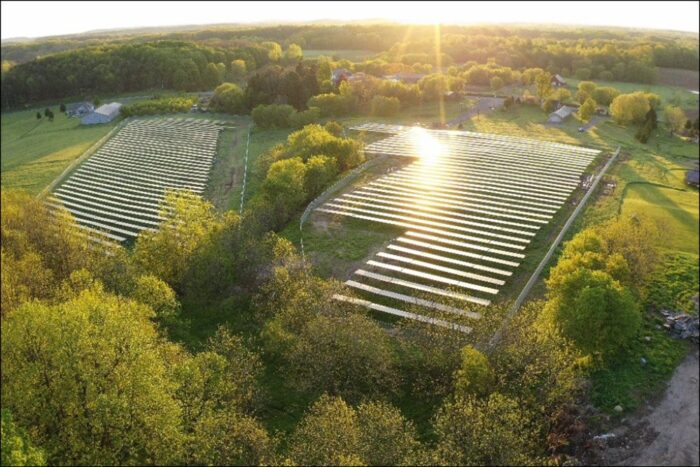
Cool factor: The Hoadley Hill Road solar project is slated to deliver enough power to serve approximately 850 homes and will feed directly into the local grid. Backed by New York’s Value of Distributed Energy Resources (VDER) compensation mechanism, the project is projected to receive $0.0971/kWh in year-one average compensation.
SolarBank is also targeting incentives through NYSERDA’s NY-Sun Program, with the potential to secure a one-time payment of up to $0.395/W. These state-backed incentives are designed to de-risk the capital stack and accelerate the pace of solar deployment across New York state.
Recurrent Energy energizes 1,200 MWh storage facility in Arizona
Recurrent Energy, a subsidiary of Canadian Solar Inc., has begun commercial operations at its 1,200 MWh Papago Storage facility in Maricopa County, Arizona. The project is now dispatching stored energy to Arizona Public Service (APS), the state’s largest electric utility, in time to help meet rising electricity demand during the summer season.
“Summer is here, and we are ready to serve APS customers with the energy they need when they need it,” said Derek Seaman, APS director of resource acquisition. “The Papago Storage project is part of our diverse and balanced energy mix, helping us continue to provide Arizona with top-tier reliability and affordable service.”
Canadian Solar’s majority-owned subsidiary, e-STORAGE, served as the turnkey engineering, procurement, and construction provider for the project and will continue to support Papago Storage under a long-term service agreement.
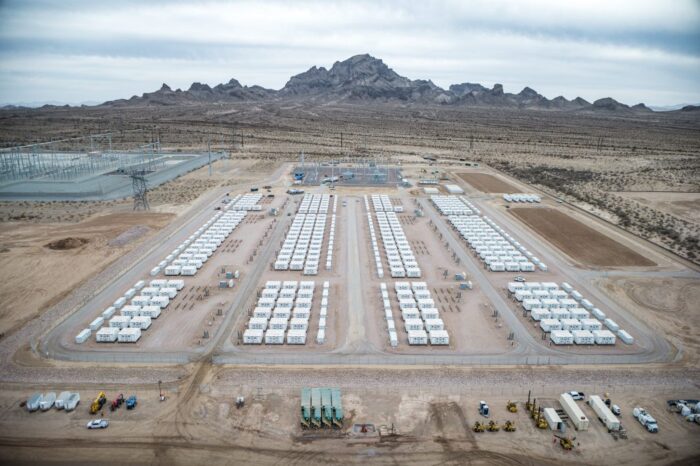
Cool factor: Papago Storage is the first of three Recurrent Energy projects with tolling agreements in place with APS to become operational. Collectively, the three projects will provide 1,800 MWh of battery storage capacity and 150 MWac of solar generation. Once all are fully operational, they will store and deliver enough electricity to serve the equivalent of 72,000 homes for four hours, along with solar generation capacity sufficient to support approximately 24,000 homes annually.
“Bringing online one of our state’s largest battery storage projects during this critical time when energy demand is growing rapidly will help our utilities execute an all-of-the-above response to that demand and further diversify Arizona’s energy resources,” said Kevin Thompson, chair of the Arizona Corporation Commission.
In addition to strengthening grid reliability, the project also contributes to the local community through tax revenues and direct support. Through its Community Community and Renewable Energy (CaRE) Program, Recurrent Energy has donated to the Harquahala Fire District and Arlington Elementary School in Maricopa County.
DSD, General Energy complete 675 kW solar project for Illinois park district
DSD Renewables and General Energy Corp. have completed a 674.96 kW rooftop solar installation for Elmhurst Park District in Illinois, enabling the district to meet sustainability goals and deliver long-term value to the local community. The system will generate approximately 754 MWh of electricity annually, offseting 50% of the district’s energy needs.
“This milestone reflects our commitment to reducing our environmental footprint while serving our community,” said Angela M. Ferrentino, director of referendum project construction for Elmhurst Park District. “This solar project represents an investment in our parks, people, and planet, and was more than just an infrastructure upgrade. We’re confident it will deliver a positive impact to the Elmhurst community for a long time to come.”
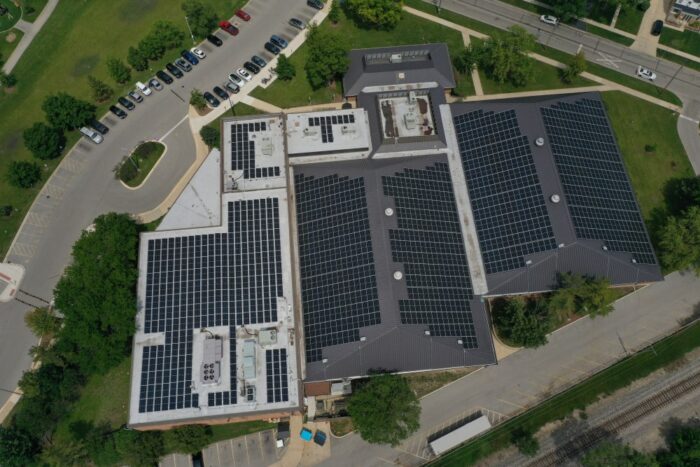
Cool factor: The Elmhurst project is financed through a 20-year power purchase agreement (PPA), and the district anticipates a net positive financial impact of approximately $307,000 over the term of the agreement. General Energy is part of DSD’s Developer Network, a channel partner program that provides regional developers the tools and resources they need to successfully develop more projects. DSD will own and operate the project long-term.
“Elmhurst Park District is setting a strong example for how public organizations can lead the way in clean energy adoption,” said Katherine Lillydahl, senior account executive for DSD’s Developer Network. “Projects like this reinforce our commitment to helping communities build a more sustainable energy future and accelerate adoption across the country.”
New community solar project powers up in Baltimore-Washington region
Maryland’s Howard County community celebrated the energization of a new 3.2 MWdc community solar project in Fulton. The Lime Kiln project was developed by Chaberton Energy and is owned and operated by Pivot Energy.
The project is part of the Maryland Community Solar program and is fully subscribed. Community solar enables area residents and businesses to gain access to lower-cost, renewable energy generated locally. Subscribers to Lime Kiln will save an average of 10% off their electricity bill each year.
“Renewable energy projects like this one are critical to the continued success of Howard County,” said Howard County Executive Calvin Ball. “Solar is bringing locally generated energy to our community, while helping meet Maryland’s ambitious goal of reaching 100% renewable energy by 2035.”
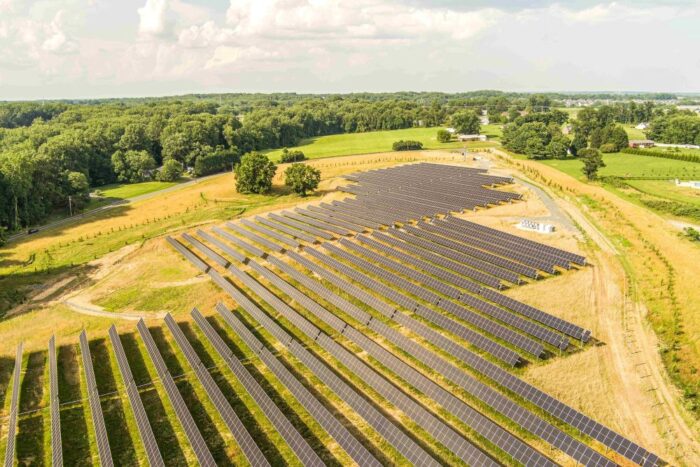
Cool factor: During a ribbon-cutting ceremony, Chaberton Energy, through its Chaberton Cares program, presented a $10,000 check to the Bright Minds Foundation, Howard County Public Schools’ education foundation. The donation will fund a STEM scholarship for graduating seniors over the next five years. This project also incorporates agrivoltaics, which is the practice of combining solar energy generation with agricultural activity on the same land.
“Lime Kiln will support sheep grazing, native pollinator planting, and other efforts to ensure the long-term productivity of this land,” said Richard Gilker, senior VP of technical operations at Pivot Energy.
The Lime Kiln project will use 15 acres on a 57-acre tract of land and include local pollinators such as milkweed (a Monarch butterfly favorite), black-eyed susans (the Maryland state flower), asters and mountain mint. These carefully selected native plants will attract insects, butterflies and birds, helping support the surrounding area’s biodiversity and agriculture.
Lime Kiln is one of two Pivot / Chaberton projects expected to be energized in Maryland this summer. Project Greyrock, a 3.3 MWdc solar project in Wicomico County, will start providing electricity to local residents in the near future.





Comments are closed here.